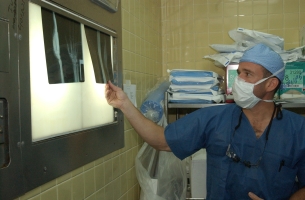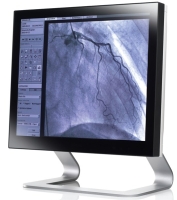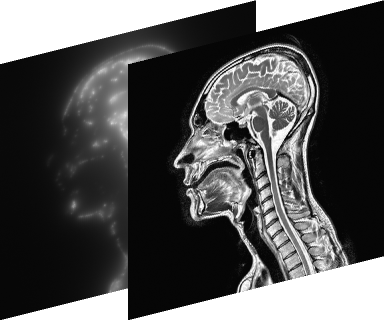Until recently, the most common method of displaying a radiographic image involved the hardcopy observation of the radiographic film on the light box. The introduction of digital techniques brought a significant change in workflow: nowadays it is possible to acquire the radiographic data by means of digital sensors, store and process them on a computer and view the image on a display. This softcopy workflow brings significant advantages over the conventional film-based techniques, including the almost immediate availability of the image, the ease of archival and retrieval and the possibility of using digital image processing techniques for noise reduction, detail enhancement, computer-aided diagnosis, etc.


A reliable diagnosis strongly depends on the performance of the display device used for the visualization of the image, and for this reason, medical-grade display devices must satisfy strict quality requirements. Liquid crystal displays (LCD) are the most widely used nowadays and offer several advantages over cathode ray tubes (CRT): LCDs can reach a higher brightness and resolution and offer sharp images without geometric distortion, especially if driven with a digital DVI interface; moreover, the absence of flicker and the reduced electromagnetic emissions contribute to reducing the observer’s eye fatigue. Other well known advantages of LCDs over CRTs include for instance the flat surface, the smaller size and the lower power consumption, especially when an LED backlight is used. However, the LCD displays currently available on the market still have a lower performance compared to the conventional radiographic film. A film-based radiographic image, viewed on the light box, can reach a peak luminance of 3000 – 4000 cd/m² and a dynamic range or contrast of several thousands. The peak brightness (white level) of a medical-grade LCD display is typically around 500 cd/m² due to constraints on the power consumption and heat dissipation. Unlike CRTs, plasma or LED/OLED technologies, liquid crystals do not emit light, but rather modulate the light generated by a uniform backlight unit placed behind the screen. Due to technological limitations, the liquid crystals can not block the light completely, and a small fraction is able to leak through in any case; as a consequence, the black level still exhibits a noticeable luminance and the contrast ratio is typically below one thousand. These limitations often require the use of window and level adjustment techniques in order to reproduce all the image details adequately.
The black level of an LCD display can be improved significantly by stacking two liquid crystal panels one on top of the other. In this way, the light is modulated twice and the theoretical contrast ratio becomes equal to the product of the contrast ratios of the two panels. Prototypes of “Dual Layer” LCD displays for medical imaging applications have been successfully built by FIMI - Philips (presently in the Barco group) and are currently under development in cooperation with the Image Processing Laboratory of the University of Trieste. The two panels are combined to a high-brightness backlight unit, calibrated for a white level of 500 cd/m². The panel facing the backlight unit is referred to as the “backpanel”, and the one seen by the viewer is referred to as the “frontpanel”. The driving electronics is properly arranged in order to allow each panel to be driven independently from a standard digital visual interface (DVI) input. To operate the display, a standard PC is used on which a graphics card with dual DVI output is installed; each panel of the dual-layer monitor is then attached to one output. The measured black level of the dual layer prototypes is below 0.01 cd/m², corresponding to a contrast ratio of over 50,000. A picture of a prototype is visible in the following Figure. On the left half of the screen, the dual-layer display is fully exploited. For comparison, on the right half of the screen a conventional single-layer LCD is simulated by displaying the whole image on the frontpanel and a white background on the backpanel. The improved black level of the dual-layer display is clearly visible.

A dual layer LCD display requires the use of complex “image splitting” algorithms in order to generate the two images which drive the two panels. The design a splitting algorithm is a complex task that involves an accurate study of the behavior of the individual panels and of the human visual system, and finally requires the use of advanced mathematical techniques for an efficient implementation. In particular, the splitting algorithm should compensate the parallax error introduced by the viewing angle: a small distance is inevitably present between the liquid crystal cells of the two panels due to the presence of glass panels and polarizer filters in between; for this reason, if the observer looks at the display from an oblique viewing angle, the images on the two panels will appear misaligned by a small but noticeable distance. In order to compensate a displacement between the two panels, it is necessary to blur the image displayed on the backpanel and to sharpen accordingly the image displayed on the frontpanel. However, due to the presence of several constraints, this blurring can not be computed by means of a conventional low-pass filter, but requires the use of complex constrained optimization methods. The following figure shows an example of the backpanel and frontpanel images generated by the splitting algorithm designed at the Image Processing Laboratory. In the current prototypes, the image splitting is performed by a specifically designed software application and the two panels are driven individually by means of a dual DVI interface. In future, the image splitting algorithms may be implemented on the GPU or on dedicated hardware inside the display, in order to reduce the processing times and permit the display of video sequences. The latter hypothesis will require the adoption of different digital interfaces, such as HDMI or SDI, capable of transferring data with a higher bit depth than the 8 bits per pixel supported by DVI.

Related publications
The scientific publications on the dual layer display, which include a detailed description of the developed splitting algorithms, are available on request.

